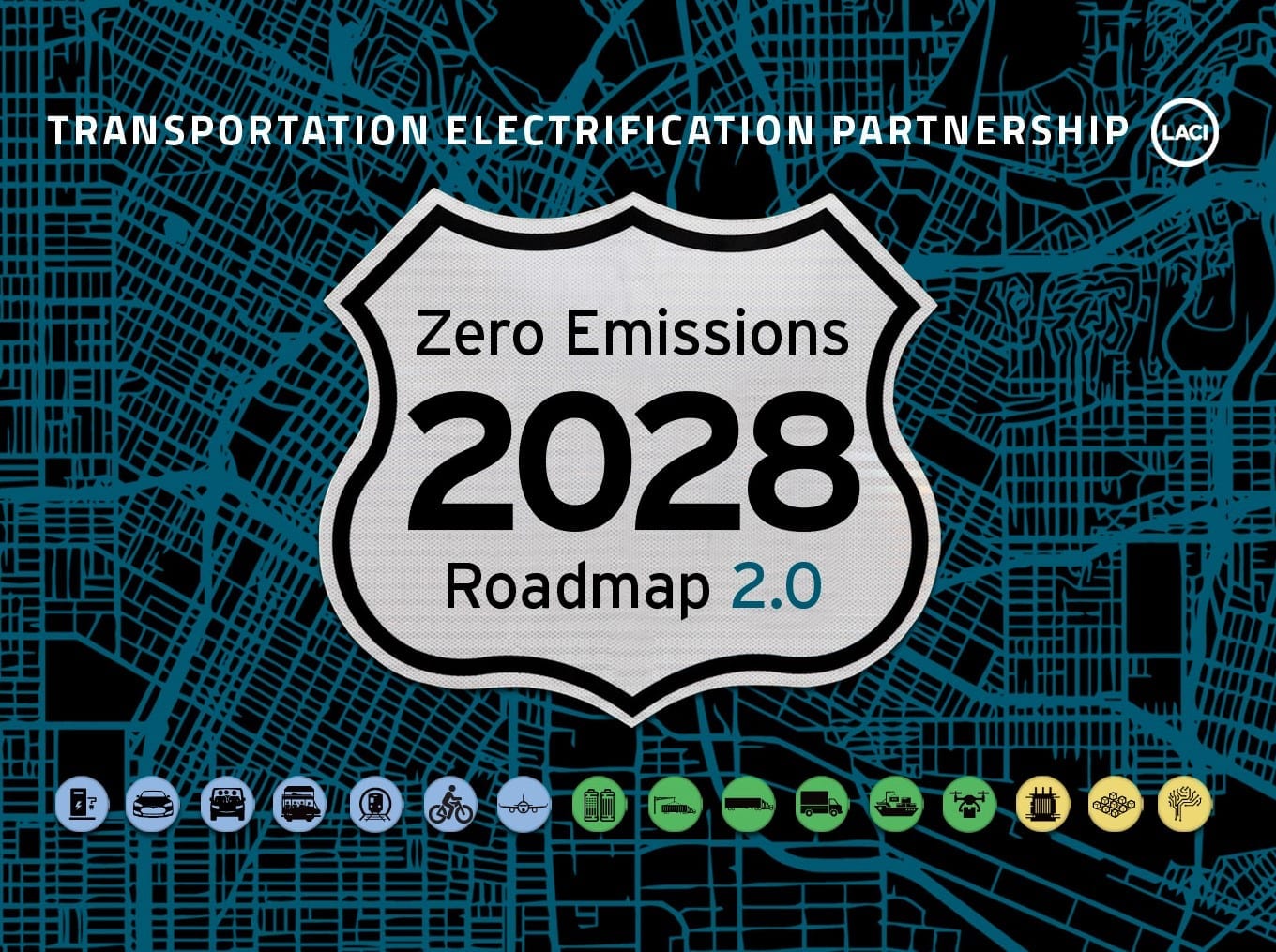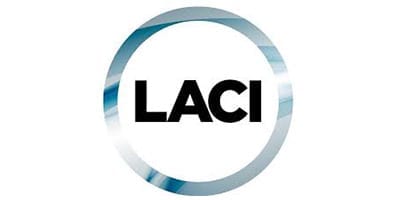The Los Angeles Cleantech Incubator (LACI) and our Transportation Electrification Partnership members recently released the Zero Emissions 2028 Roadmap 2.0, an ambitious plan detailing the pathway we are working toward to create the zero emissions transportation future we want and need for the greater Los Angeles region. It’s a future that will result in cleaner air for residents and dramatically reduce the region’s transportation sector greenhouse gas emissions, reducing emissions an additional 25% beyond existing commitments tied to California state law. It’s a future that will take the integrated work of all the Partnership members and many other public and private sector allies, and we invite you to join us.
What is the Transportation Electrification Partnership?
We joined together in May 2018 to launch this unprecedented multi-year partnership among local government, state regulators, utilities, leading industry players, labor organizations, and startups to accelerate transportation electrification and zero emissions goods movement in the Greater Los Angeles region. We set the 2028 Olympic and Paralympic Games as our timeline—and we committed to prioritize the communities that disproportionately face the impacts of vehicle pollution and can benefit the most from the clean air and cost-saving benefits of electric vehicles.
The Zero Emissions 2028 Roadmap 2.0 details the pathway to a zero emissions transportation future for the Los Angeles region, setting the 2028 Olympic and Paralympic Games as the timeline.
What is the Zero Emissions 2028 Roadmap?
Based on extensive emissions modeling—incorporating more than 900 local, regional and state policy commitments and assumptions—we established a transportation emissions baseline for the region, and projected various rate of deployment for infrastructure and vehicles by 2028 to achieve our 25% emissions reduction goal.
With the 2.0 version of the Roadmap, we have committed—individually and collectively—to leveraging our authority and resources to achieve a 2028 in which:
- Electric vehicles account for 30% of all light-duty passenger vehicles on the road and at least 80% of all vehicles sold;
- 20% of all trips in single occupancy vehicles shift to zero emissions public transport, bikes or other active transportation options;
- All public investments into surface vehicles and related infrastructure for goods movement will advance zero emissions solutions and that the I-710 freeway is the first zero emissions goods movement corridor in the nation.
Spotlight on Goods Movement
The Los Angeles region is a gateway for goods entering California and the nation as a whole, with forty% of all the goods that enter the US traveling through the Ports of Los Angeles and Long Beach. Today, goods movement represents the region’s largest source of air pollution.
A thoughtful and comprehensive approach to commercial fleet electrification will be essential to the Roadmap’s success and to achieving the region’s economic, environmental, and public health goals.
Today, 40% of all the goods that enter the US travel through the Ports of Los Angeles and Long Beach. Goods movement represents the region’s largest source of air pollution.
As such, we have set specific targets for goods movement in LA County, aiming by 2028 for:
- 60% of medium-duty delivery trucks on the road to be electric
- 40% of short haul and drayage heavy duty trucks on the road to be zero emission
- 5% of long-haul heavy duty trucks on the road to be zero emission
- Up to 95,000 zero emission chargers installed for goods movement
The drayage and short-haul goal is consistent with the pace needed to achieve the joint goal held by the Ports of Los Angeles and Long Beach for all on-road drayage trucks serving the Ports to be zero emissions by 2035. As shown by recent research by UCLA’s Luskin Center for Innovation, waiting until the early 2030s to implement zero emissions trucks and the supporting infrastructure would lead to significantly more stranded assets and notably worse air quality and public health outcomes.
Next Steps on Policies and Pilot Projects
We will detail the policy pathway needed at the local, regional, and state levels, identifying which Partnership members can take the lead on which policies, as well as engaging additional actors in the transportation electrification ecosystem to join us. This includes advocating for continued incentives for medium- and heavy-duty trucks and charging infrastructure, and working with the ports to advance system optimization strategies to further incentivize the adoption of zero emissions drayage trucks.
We will address gaps in technology, infrastructure, and funding by accelerating pilot projects underway, and scoping new pilot concepts to address barriers to achieving our goals. This includes securing funding to pilot medium- and heavy-duty trucks and supporting charging infrastructure along the I-710 freeway to provide the confidence needed for truck owners and operators in the region to transition to zero emissions trucks. It also includes engaging delivery companies, e-cargo bike companies, and alternative ecosystem providers to better understand the needs for a successful last-mile zero emissions delivery zone pilot.
LACI and the Transportation Electrification Partnership invite truck manufacturers, EVSE providers, businesses, LA County cities, labor organizations, and more—to join with us.
Join Us
LACI and all of the Transportation Electrification Partnership members are doubling down on the bold steps we must take to accelerate clean air and climate action here in Los Angeles. Yet even with such a diverse and influential set of partners, we need additional actors—truck manufacturers, EVSE providers, businesses, LA County cities, labor organizations, and more—to join with us.
We invite you to sign up for our Zero Emissions Transportation Newsletter to stay abreast of the Partnership’s progress and opportunities for collaboration. And we welcome additional members to join us at the table, to roll up your sleeves with us to identify solutions to the policy, financial, technology, infrastructure and behavioral challenges to achieving our goals.
As CARB Chair Mary Nichols stated, “Together, we can serve as a model for California, the nation, and the world by building a state-of-the-art transportation system that moves people and goods cleanly, efficiently, and sustainably throughout the region. Let’s get to work.”



